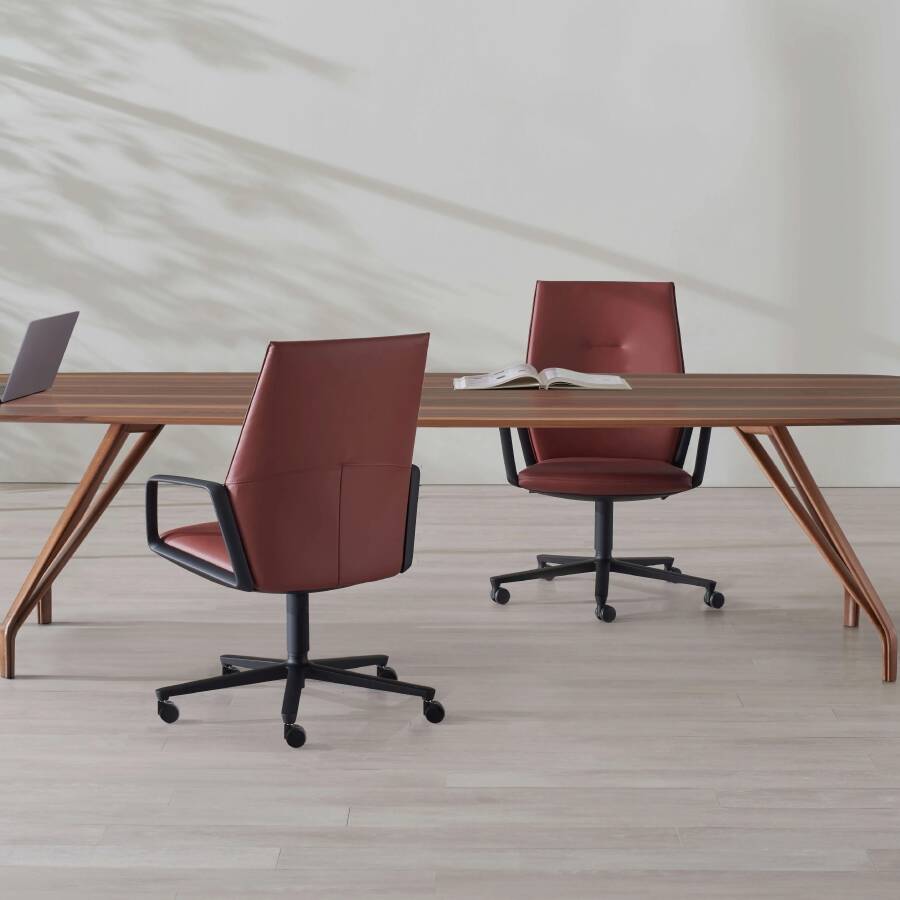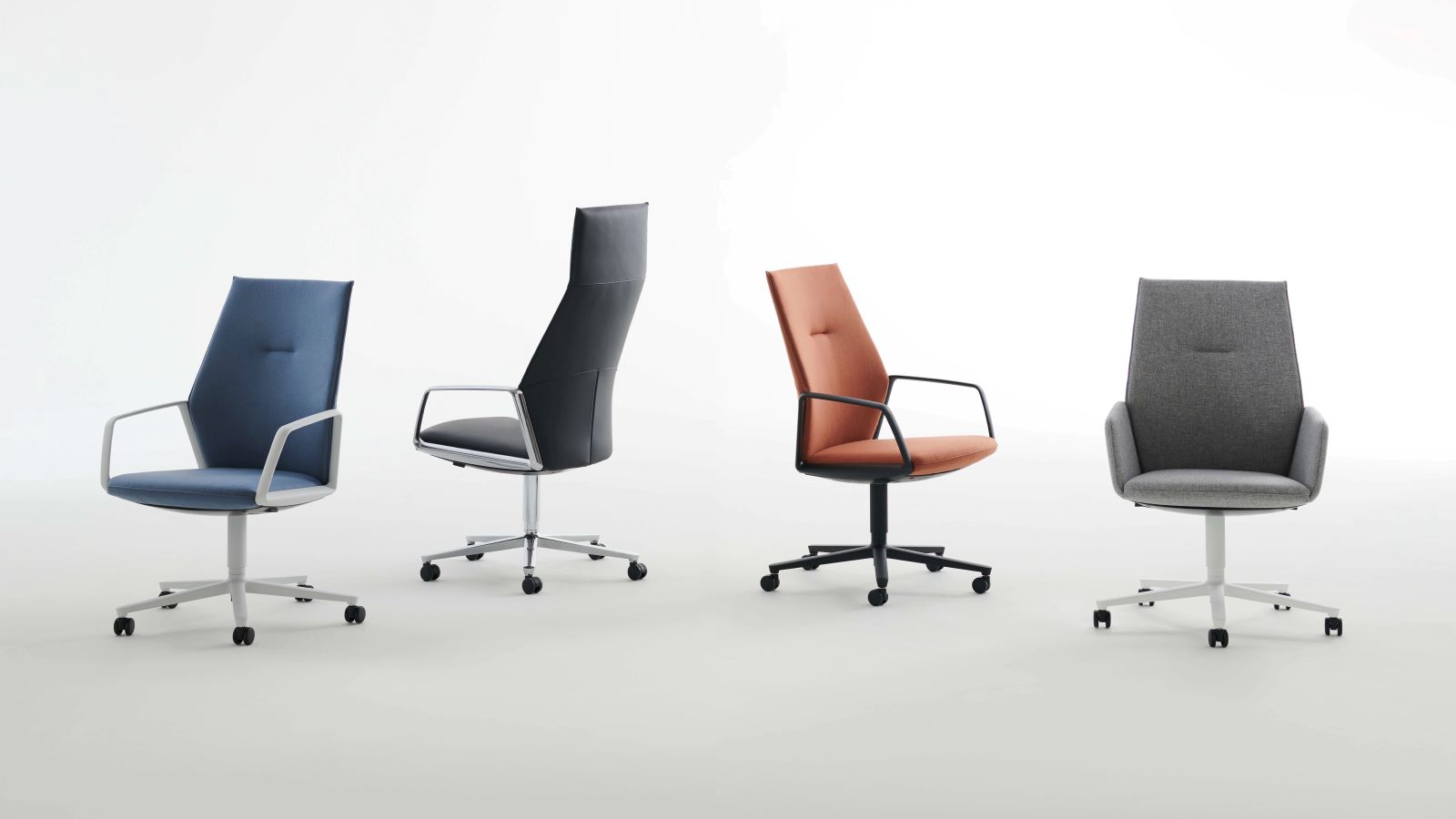M75 Motion Chair
M75 Motion Chair
PD22 Winner
Category:Furniture - SeatingLocation:High Point, North Carolina, USADesigner:Jonathan Prestwich, Jonathan Prestwich Studio, North Carolina, USAManufacturer:Davis Furniture Industries Inc., High Point, North Carolina, USA
The Motion chair, designed by Burkhard Vogtherr and released in 1987, was a revolutionary design that responded to the user and capitalized on comfort and good ergonomic design. Unlike most other executive seating at the time, Motion moved in a manner that imitated the human body’s natural movement. The patented mechanism, designed by Vogtherr, allowed for this innovative movement. Motion was a great success and was a staple of the Davis Furniture line for 25 years.
M75, by Jonathan Prestwich and Burkhard Vogtherr, is a modern take on this Davis classic. Davis approached Prestwich and Vogtherr and asked them to work together to modernize the classic design. With that request, M75 was born. This new evolution of a traditional executive chair is built for the 21st century workplace. The geometry of the chair is designed so that the user acts as a counterweight for the movement of the seating mechanism.
To make the concept of the Motion chair relevant in the 21st century, the designers looked at how their lives have changed since the 1980’s. They found that today – as a result of our increased communication and major advancements in technology – we are highly stimulated throughout the day. This brings the need for furniture that is more visually calm and that works with the user without the need for adjustment. M75’s design is centered on the idea of taking away distractions.
Vogtherr and Prestwich took certain aspects of the Motion chair, namely the ideal comfort and the revolutionary mechanism, and worked to create the same result through a more sophisticated and modern design. To create a high level of comfort, the designers sculpted a comfortable form and incorporated a flexible suspension into the back. The real trick was ensuring they would have the same comfort that Motion was known for, but this time, without the mechanism being visible.
Vogtherr and Prestwich’s solution was to incorporate the chair’s mechanism into the body of the chair itself. There are no visible components to the seating mechanism, and the only adjustment controls are discrete switches underneath the seat. These control switches are for locking the mechanism in an upright position and height adjustment. Once this new evolution of the Motion mechanism was perfected, the designers looked to aesthetics.
Breaking down the components of M75, the back, seat, and armrests were designed to be elegant and visually quiet, but to come together with a perfect balance and flow. The chair itself is like a static sculpture with beautiful flowing lines and a simple elegance that speaks volumes.



